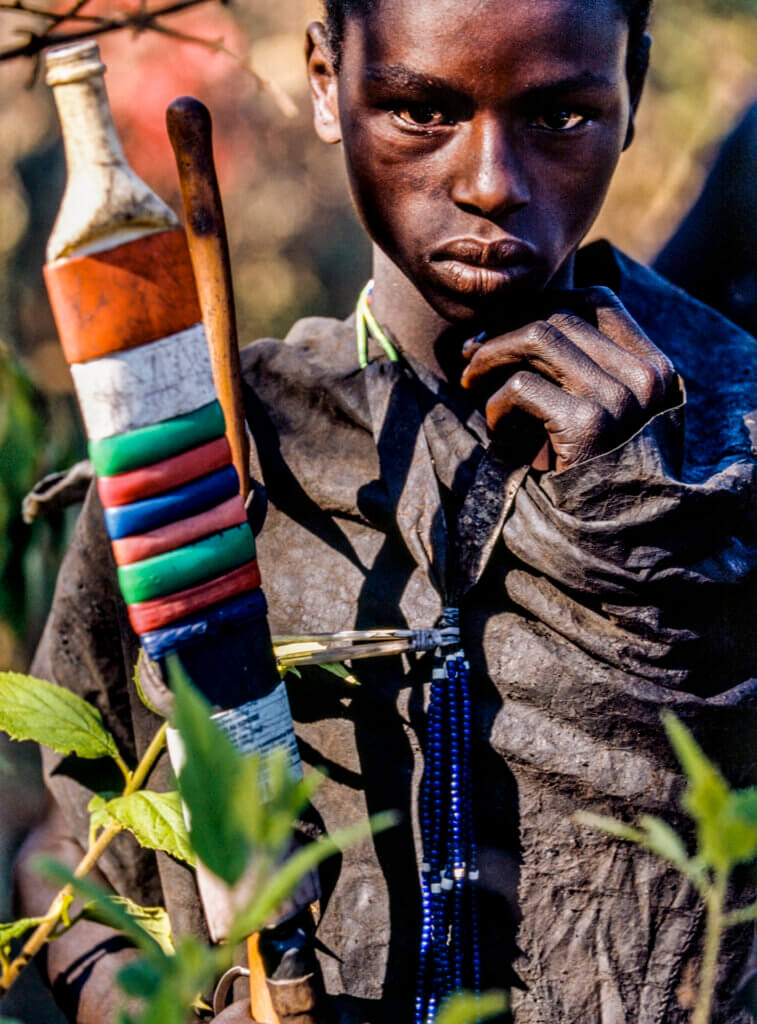SACRED WHITE BULL
Samburu Warrior Passage
The most important ceremony for the Samburu of northern Kenya is the Lmongo Surwa Lo Layiok, or White Bull for Boys. This occurs just once every fourteen years when a new generation of warriors is initiated, causing all generations of men to move up in the hierarchy of age grades. In 2005, this ceremony took place on Mount Nyiro, the sacred mountain of the Samburu. It was held on top of the 8000 ft mountain where the Samburu said they felt closest to their god, Nkai. The elders wanted the ceremony to be photographed—perhaps for the last time - as the younger generation was moving away from traditional practices.
Dressed in oiled, charcoal-blackened hides, 384 Samburu boys climbed to the flat, forested top of the mountain. The initiates carried bundles of long white reeds to be fashioned into arrows following their circumcision. In the high-altitude mists, they plucked juniper leaves and old man’s beard moss, weaving them as blessings into wreaths for their hair and clothes. They also collected large beetles with reddish wing cases to string onto their blue-beaded necklaces. This new generation of initiates, called layok lo lkilani, were preparing to be circumcised, after which they would become warriors. The initiates’ patrons, called Fire Stick Elders, lit a large bonfire. A white bull, carefully selected for its physical perfection, was suffocated and butchered, its hide cut into strips to make bracelets for the initiates, and the animal quartered so that every youth could eat a morsel of the flesh. Billowing smoke from the fire roasting the meat rose skyward to appease Nkai, the Samburu God.
After the White Bull ceremony ended, the initiates sprinted down the steep mountain toward the El Barta plains, where they celebrated the passage to their next stage of life in vigorous dance and song. Following their celebration, they proceeded to a special Lorora—a large thorn enclosure—to undergo circumcision. Each boy was circumcised at the entrance of his mother’s home. One elder patron held the boy under his arms, supporting his back, while another held his legs. During the circumcision, the boys did not flinch, because reacting to the pain would bring everlasting shame to them and their families. Each boy was then taken into the house of his mother, who had built him a special healing bed made of tree branches on top of which leaves and skins were placed.
Later, when the boys could walk, they roamed the wilderness for a month, receiving hunting instruction from their elders. Viewed as being too weak to kill lions, the initiates were given bows and arrows tipped with sticky wax to shoot colorful birds. These were gutted and tied onto headbands to display their emerging skills as hunters, essential for their next stage of life as warriors.
